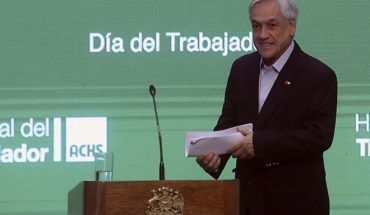On Monday 28, Tuesday 29 and Wednesday 30 November, the new Higher Education Access Test (PAES) will be applied for the first time, which will definitively replace the old PSU and the transitory PDT. This new instrument will evaluate the competencies of those who take it, integrating skills and knowledge necessary for success in university education. Likewise, it contemplates agendas according to the curricular prioritization carried out by the Mineduc and that considers the educational effects of the pandemic.
The Undersecretary of Higher Education, Verónica Figueroa Huencho, explains that “these tests are the result of a work carried out in conjunction with the Technical Committee for Access to the University Subsystem with the purpose of moving towards a more equitable and fair access system, which puts the applicants at the center and that, in addition, recognizes the diversity of their talents.”
For her part, the director of DEMRE, Leonor Varas, emphasizes that “the main thing in these days prior to the surrender of the PAES is that young people share with their friends, with their peers, that they practice if they want, but that they also get distracted, rest and eat well. The test is important, but life does not go away in it. There are more opportunities and options, and life goes around a lot.”
More than 275,000 people are registered to take this first version of the SEAP. On Saturday, November 26, from 09:00 hours, you can download your Identification Card from acceso.mineduc.cl and www.demre.cl, where the premises and the surrender room will be detailed. Each applicant must download, print and take it on the day of application.
Recommendations for SEAP
This year, a new Math test is included, therefore, the surrender will take place over three days. The order of surrender of the tests will no longer be the one that was traditionally used, therefore, it is important that the applicants are very clear about the day and time in which each exam will be applied:
Some tips:
Given that for the first time in two years there are no health restrictions, the call is for applicants to take care of their health in the previous days. The use of a mask is optional and both the entrances and exits of premises will be separated and signposted.
It is not allowed to eat during the surrender or share personal items.
It is recommended to arrive 15 minutes before the start of the application and it is suggested that students know the journey to the premises well so that they can plan their trip in advance.
Each applicant must bring their Chilean identity card or passport, as appropriate, graphite pencil No. 2 or HB pencil, eraser and their printed identification card.
Entry with electronic devices such as cell phones, tablets, calculators, photographic machines and smart watches, among others, will not be allowed.
Nor will they be able to enter with wallets, bags, backpacks or any item that is not necessary during the test.
Five recommendations before taking the SEAP
Natalia Cortés G., sociologist and Coordinator of the UACh Learning Support Unit, highlights that the main differences between the PAES, PSU and PDT, are focused on changing the orientation of the questions, the incorporation of another test, the possibility of taking in winter and summer, in addition to the modification in the weighting of the scores.
These innovations are proposed under the logic of competency assessment, rather than just content. On the other hand, the incorporation of a second mathematics test (M2) differs from the compulsory mathematics test (M1) since it measures contents and skills from 7th grade to 2nd year middle. Therefore M2 is left with a higher level of specificity, considering agendas of 3rd and 4th half and is also required only for some races.
To face this test in a better way, Natalia Cortés delivers five recommendations:
Their skills will be important in this test, regardless of whether or not they know a specific formula. The PAES is oriented to know how to be and know how to do; reasoning, comprehension and problem solving, so it is expected that distances between students who come from establishments from different contexts will be shortened.
Being relaxed when it comes to taking the SEAP seems easy to say, but difficult to achieve. However, the possibility of being able to take a winter test takes the pressure off and adds to the an extra possibility, considering it as a plan B. In this same sense, for this admission process, the scores of the surrender of November 2021, winter 2022 and the one that surrenders now will be considered. The scores will be weighted according to the best scores obtained, being able to mix them.
The vocational choice and that conversation that can sometimes become uncomfortable with the family is important to face a test in “tranquility”. This is why it is important to talk about their interests, motivations, future projection and expectations that -sometimes- differ between parents and children.
In this admission process they will be able to apply up to 20 careers, but it is vital to consider the order of those preferences and that family conversation is better to have before facing the PAES. On the other hand, the surrender of M2 as mandatory for some races is necessary to consider it, since in case they have not registered it, they will be able to render it the same, but for that they must know if it is a requirement in their preferred races.
Finally, remind students that the value of each is not put in a test that is given in 3 days. The value of each one is within themselves, in their personalities, in their interactions and bonds. The most important thing is that they take the test with the conviction that changes have been made that seek progress in access to higher education, advancing in quality and equity.
Experts emphasize the importance of rest and healthy habits to perform a good SEAP
Micheline Silva, Differential Educator of the Student Medical Service of the DAE PUCV, stressed the importance of avoiding overstimulation of news about the subject of the test, especially on the same day, since these can increase nervousness and anxiety. In addition, he emphasized that it is not necessary or productive to study the last days and that you should rely on rest and good sleep. “When we are at rest, our brain continues to process information and make connections related to what has been studied,” he said.
On the other hand, he indicated that the implementation of a clear routine and healthy habits favors memory and helps reduce stress levels, since they give the feeling of having situations under control. “Implementing routines that help manage emotions is key, for example, writing a journal, watching series, listening to music and sharing how you feel with people close to you. This helps us to complete the cycles of stress, giving closure to the situations that are worrying us and preventing a collapse in the same or subsequent evaluation. The important thing about this is that stress causes us to release large amounts of cortisol, which, at the cognitive level, can block access to memory and our attention span,” he said.
In this same line, the academic of the School of Physical Education of the PUCV, Fernando Rodríguez recommends that to face the end-of-year evaluations it is ideal to exercise at least one hour a day and eat well, avoiding the consumption of foods with saturated fats that affect intestinal health: “The body needs to oxygenate, sweating, releasing stress. It is necessary to look for activities not only the day before, but ideally about 15 days before the measurement. Move, walk, ride a bicycle, jog, swim or do some exercise with intensity, which allows to keep controlled the levels of stress or anxiety and the body in good condition so that it can perform in those long days sitting during the surrender of the test, “he concluded.
Follow us on





